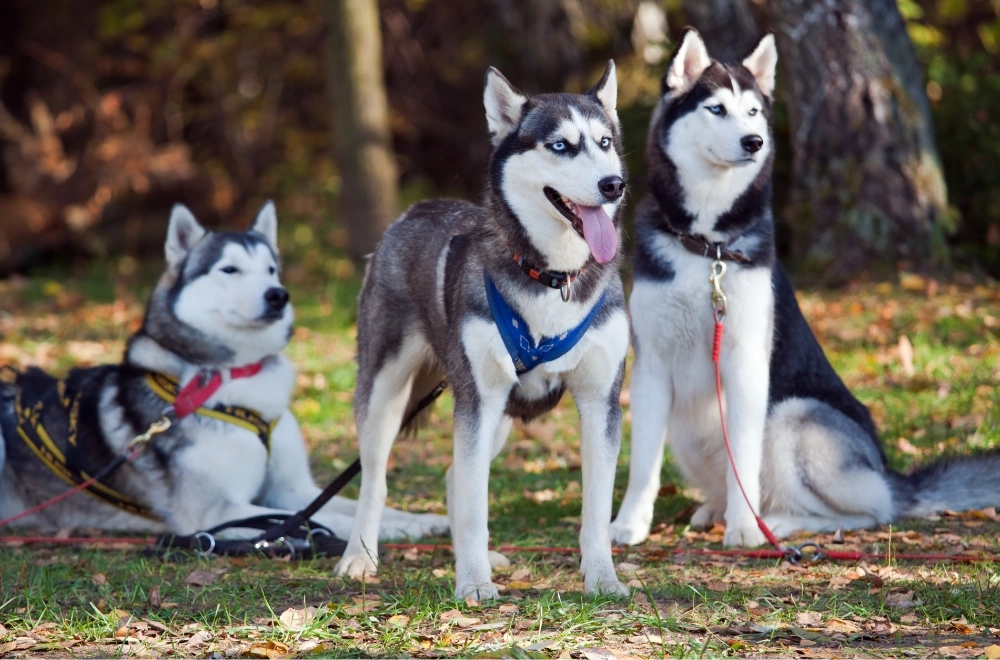Introduction
The Siberian Husky is a strikingly beautiful and energetic dog breed known for its wolf-like appearance, piercing blue or multicolored eyes, and incredible endurance. Originally bred by the Chukchi people of Siberia as sled dogs, Huskies are now beloved worldwide for their friendly temperament, intelligence, and athleticism.
History and Origin
The Siberian Husky’s roots trace back to northeastern Asia, where the semi-nomadic Chukchi people developed them over 3,000 years ago. These dogs were essential for transportation, pulling light sleds over vast frozen landscapes while conserving energy in harsh Arctic conditions.
In the early 20th century, Huskies gained international fame during the 1925 “Serum Run“ to Nome, Alaska, where teams of sled dogs, including Siberian Huskies, delivered life-saving diphtheria antitoxin across nearly 700 miles of treacherous terrain. This heroic feat cemented their reputation as resilient and dependable working dogs.
Physical Characteristics
Siberian Huskies are medium-sized dogs with a well-balanced, athletic build. Key features include:
Size:
- Height: 20–23.5 inches (51–60 cm) at the shoulder
- Weight: 35–60 pounds (16–27 kg)
Coat & Colors:
- Double coat (dense undercoat + longer topcoat)
- Colors: Black, gray, red, agouti, sable, and white, often with striking facial masks and markings
Eyes:
Blue, brown, green, or heterochromatic (one of each color)
Tail & Ears:
- Bushy, sickle-shaped tail
- Erect, triangular ears
Temperament and Personality
Huskies are known for their outgoing, mischievous, and affectionate nature. Key personality traits include:
- Friendly & Social: They get along well with people, children, and even other dogs.
- High Energy: Bred for endurance, they require extensive exercise and mental stimulation.
- Independent Thinkers: Intelligent but sometimes stubborn, making training a challenge.
- Vocal: They howl, “talk,” and whine rather than bark excessively.
- Escape Artists: Their strong prey drive and curiosity mean they may try to dig or jump fences.
Care and Maintenance
Exercise Needs
Huskies need at least 1–2 hours of vigorous exercise daily, including:
- Running, hiking, or biking
- Sledding, skijoring, or agility training
- Interactive play and puzzle toys
Without enough activity, they may become destructive or develop anxiety.
Grooming
- Shedding: Heavy shedding twice a year (“blowing their coat”)
- Brushing: Weekly (daily during shedding season)
- Bathing: Only when necessary to preserve natural oils
Diet & Nutrition
- High-protein, high-fat diet for active dogs
- Portion control to prevent obesity
- Avoid overfeeding; Huskies are efficient metabolizers
Training & Socialization
- Start training early with positive reinforcement
- Leash training is crucial (they love to run!)
- Socialize with other pets and people to curb excessive prey drive
Health and Lifespan
Huskies are generally healthy but may be prone to:
- Hip Dysplasia
- Eye Issues (cataracts, progressive retinal atrophy)
- Autoimmune Disorders
- Zinc Deficiency (leading to skin problems)
Average Lifespan: 12–15 years
Is a Siberian Husky Right for You?
Best For:
- Active individuals or families
- Cold climates (though they adapt with proper care)
- Experienced dog owners who can handle their energy
Challenges:
- Not suited for apartment living without intense exercise
- Prone to escaping if bored
- Heavy shedding
Conclusion
The Siberian Husky is a magnificent breed with a rich history, striking looks, and an adventurous spirit. While they require significant commitment in terms of exercise and training, their loyalty, playfulness, and boundless energy make them a rewarding companion for the right owner. If you’re ready for an active, intelligent, and endlessly entertaining dog, the Siberian Husky might just be your perfect match.
